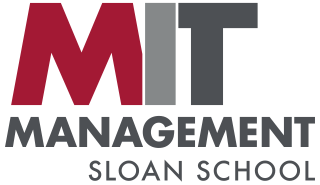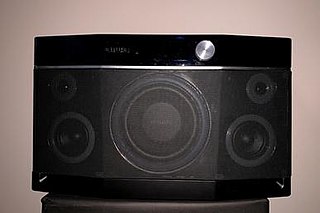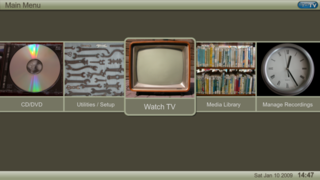Related Research Articles

Free software or libre software is computer software distributed under terms that allow users to run the software for any purpose as well as to study, change, and distribute it and any adapted versions. Free software is a matter of liberty, not price; all users are legally free to do what they want with their copies of a free software regardless of how much is paid to obtain the program. Computer programs are deemed "free" if they give end-users ultimate control over the software and, subsequently, over their devices.
A software patent is a patent on a piece of software, such as a computer program, libraries, user interface, or algorithm.

The MIT Sloan School of Management is the business school of the Massachusetts Institute of Technology, a private university in Cambridge, Massachusetts. MIT Sloan offers bachelor's, master's, and doctoral degree programs, as well as executive education. Its degree programs are among the most selective in the world. MIT Sloan emphasizes innovation in practice and research. Many influential ideas in management and finance originated at the school, including the Black–Scholes model, the Solow–Swan model, the random walk hypothesis, the binomial options pricing model, and the field of system dynamics. The faculty has included numerous Nobel laureates in economics and John Bates Clark Medal winners.

Aiwa (アイワ) is a consumer electronics brand owned and used by various companies in different regions of the world. American and other regions are owned by Chicago-based Aiwa Corporation. Towada Audio based in Tokyo owns the rights to the brand in Japan and other countries, and has been manufacturing Aiwa-branded products since 2017. In Mexico and other countries in Latin America, the rights are owned by Audio Mobile Americas, S.A.
A digital video recorder (DVR) is an electronic device that records video in a digital format to a disk drive, USB flash drive, SD memory card, SSD or other local or networked mass storage device. The term includes set-top boxes with direct to disk recording, portable media players and TV gateways with recording capability, and digital camcorders. Personal computers are often connected to video capture devices and used as DVRs; in such cases the application software used to record video is an integral part of the DVR. Many DVRs are classified as consumer electronic devices; such devices may alternatively be referred to as personal video recorders (PVRs), particularly in Canada. Similar small devices with built-in displays and SSD support may be used for professional film or video production, as these recorders often do not have the limitations that built-in recorders in cameras have, offering wider codec support, the removal of recording time limitations and higher bitrates.

MythTV is a free and open-source home entertainment application with a simplified "10-foot user interface" design for the living room TV. It turns a computer with the necessary hardware into a network streaming digital video recorder, a digital multimedia home entertainment system, or home theater personal computer. It can be considered a free and open-source alternative to TiVo or Windows Media Center. It runs on various operating systems, primarily Linux, macOS, and FreeBSD.
OpenMAX, often shortened as "OMX", is a non-proprietary and royalty-free cross-platform set of C-language programming interfaces. It provides abstractions for routines that are especially useful for processing of audio, video, and still images. It is intended for low power and embedded system devices that need to efficiently process large amounts of multimedia data in predictable ways, such as video codecs, graphics libraries, and other functions for video, image, audio, voice and speech.

The open-design movement involves the development of physical products, machines and systems through use of publicly shared design information. This includes the making of both free and open-source software (FOSS) as well as open-source hardware. The process is generally facilitated by the Internet and often performed without monetary compensation. The goals and philosophy of the movement are identical to that of the open-source movement, but are implemented for the development of physical products rather than software. Open design is a form of co-creation, where the final product is designed by the users, rather than an external stakeholder such as a private company.
The software patent debate is the argument about the extent to which, as a matter of public policy, it should be possible to patent software and computer-implemented inventions. Policy debate on software patents has been active for years. The opponents to software patents have gained more visibility with fewer resources through the years than their pro-patent opponents. Arguments and critiques have been focused mostly on the economic consequences of software patents.
Neuros Technology was a Chicago, Illinois–based company that produced a number of audio and video devices under the brand name Neuros. Founded by Joe Born in 2001 as a division of Digital Innovations, it previously operated under the name Neuros Audio. Like Digital Innovations, Neuros distinguished itself by its use of open-innovation and crowdsourcing techniques to bring products to market, as well as by its prominent use of open-source software and open-source hardware. In its development model, end users were involved throughout the product development process from reviewing initial concepts to beta testing initial product releases.

Free and open-source software (FOSS) is a term used to refer to groups of software consisting of both free software and open-source software where anyone is freely licensed to use, copy, study, and change the software in any way, and the source code is openly shared so that people are encouraged to voluntarily improve the design of the software. This is in contrast to proprietary software, where the software is under restrictive copyright licensing and the source code is usually hidden from the users.

SageTV Media Center, now open source, was a proprietary, commercial DVR and HTPC software for Mac OS X, Windows and Linux. It requires that the host computer have a hardware-based TV tuner card. The SageTV software has an integrated Electronic Programming Guide (EPG) that is updated via the Internet. The program provides a television interface for DVR, music, and photos on Windows and Linux. SageTV Media Center typically records in standard MPEG2, making it possible to transfer recordings to laptops or other devices. It also has a built-in conversion feature to transcode files into other formats compatible with iPod, PSP, cell phones and other portable devices.
Ceph is an open-source software-defined storage platform that implements object storage on a single distributed computer cluster and provides 3-in-1 interfaces for object-, block- and file-level storage. Ceph aims primarily for completely distributed operation without a single point of failure, scalability to the exabyte level, and to be freely available. Since version 12, Ceph does not rely on other filesystems and can directly manage HDDs and SSDs with its own storage backend BlueStore and can completely self reliantly expose a POSIX filesystem.
The Lemelson Foundation is an American 501(c)(3) private foundation. It was started in 1993 by Jerome H. Lemelson and his wife Dorothy.

Dov Moran is an Israeli entrepreneur, inventor and investor, best known as the inventor of the USB memory stick, and one of the most prominent Israeli hi-tech leaders.

Charles Donald Bateman, known as Don Bateman, is an electrical engineer and the inventor of the Ground Proximity Warning System (GPWS), a device that is responsible for a marked decline in controlled flight into terrain accidents, such as the Mount Erebus Disaster with Air New Zealand Flight 901.
"It's accepted within the industry that Don Bateman has probably saved more lives than any single person in the history of aviation."
Communities that support innovation have been referred to as communities of innovation (CoI), communities for innovation, innovation communities, open innovation communities, and communities of creation.
University spin-offs are companies that transform technological inventions developed from university research that are likely to remain unexploited otherwise. They are a subcategory of research spin-offs. Prominent examples of university spin-offs are Genentech, Crucell, Lycos and Plastic Logic. In most countries, universities can claim the intellectual property (IP) rights on technologies developed in their laboratories. In the United States, the Bayh–Dole Act permits universities to pursue ownership of inventions made by researchers at their institutions using funding from the federal government, where previously federal research funding contracts and grants obligated inventors to assign the resulting IP to the government. This IP typically draws on patents or, in exceptional cases, copyrights. Therefore, the process of establishing the spin-off as a new corporation involves transferring the IP to the new corporation or giving the latter a license on this IP. Most research universities now have Technology Licensing Offices (TLOs) to facilitate and pursue such opportunities.
Open source is source code that is made freely available for possible modification and redistribution. Products include permission to use the source code, design documents, or content of the product. The open-source model is a decentralized software development model that encourages open collaboration. A main principle of open-source software development is peer production, with products such as source code, blueprints, and documentation freely available to the public. The open-source movement in software began as a response to the limitations of proprietary code. The model is used for projects such as in open-source appropriate technology, and open-source drug discovery.
References
- ↑ How Aiwa, a former global stereo brand, is getting resurrected in Chicago http://www.chicagotribune.com/bluesky/originals/chi-aiwa-joe-born-bsi-20150310-story.html
- ↑ Digital rights article on neurostechnology.com http://www.neurostechnology.com/your-digital-rights-and-why-they-are-important Archived 2007-09-13 at the Wayback Machine
- ↑ Chester Bateman Podcast 6/7/08 "Neuros OSD Podcast » Chester Bateman". Archived from the original on 2012-02-29. Retrieved 2009-11-09.
- ↑ Inventor, Daughter Team up on Cup http://articles.chicagotribune.com/2012-10-14/business/ct-biz-1014-confidential-cup-20121014_1_lily-legs-first-cup
- ↑ CNN Heroes Young Wonder Lily Born https://www.youtube.com/watch?v=pvOQK-hTbmI
- ↑ "Creating Young Entrepreneurs at Nettelhorst School in Chicago". 24 January 2013.